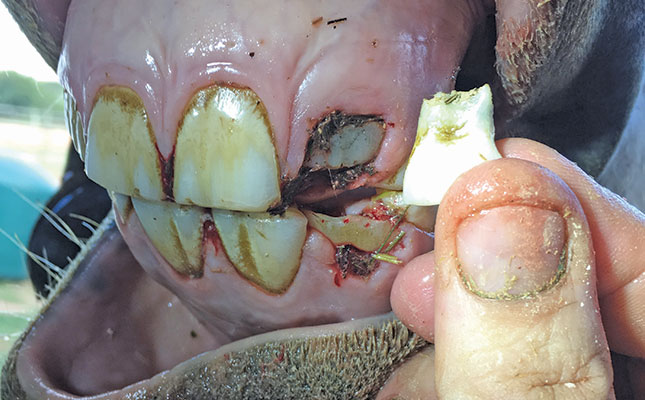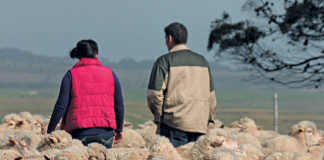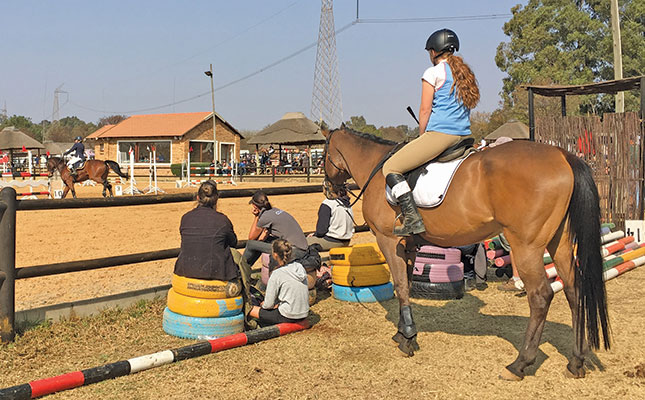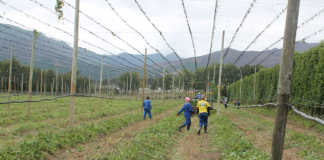
Photo: Dr Mac
Tooth caps are the name equine dentists give to the thin remnants of deciduous (baby) teeth that are shed in young horses as permanent teeth break through their gums.
Generally, these are lost naturally during grazing; however, sometimes they remain in place and prevent the eruption of the permanent teeth.
This can also cause pain and lead to difficulties during training, with some horses being difficult to lead. Rearing, bucking, evading the bit and head shaking also present as symptoms of this condition. Understanding tooth eruption can help you recognise capping as a possible cause for a young horse being ‘difficult’.
The front teeth used for tearing off mouthfuls of grass are called incisors. There are twelve of them: six in the upper jaw and six in the lower jaw. Canines or ‘tushes’ are the sharp teeth found in the gap between the incisors and the check teeth.
There is one on each side in both upper and lower jaws and they erupt at between four and five years of age, mainly in male horses. Wolf teeth are small pre-molar (cheek) teeth that sometimes erupt, mainly in the upper jaw, between six and 18 months and are usually extracted by dentists.
The cheek teeth in horses have flattened, irregular surfaces and are used for chewing and grinding up hard grasses and grains to make them easier to swallow and digest. There are two types: premolars (12 teeth) and molars (12 teeth).
These form an ‘arcade’ (surface for grinding) of teeth on both sides in the upper and lower jaws. The premolar teeth have a deciduous stage that is eventually shed as ‘caps’ when the permanent teeth erupt. Adult molars and premolars erupt at the same time.
Retained caps
Most of the time, caps are shed naturally when permanent teeth grow up through the gums and loosen them. It’s not advisable to pull out or remove deciduous teeth as this can cause damage or uneven growth, or a change in direction of the underlying permanent teeth.
The deciduous tooth cap fits in between the teeth on each side and keeps them apart until the permanent tooth is nearly level with the biting surface, before it falls off.
Capping can occur in incisors and premolars. The affected horse will often show pain and excessive salivation when eating or grazing. In the short term, the capping of the emerging incisor or premolar usually results in pain, inflammation and infection that can make the horse very difficult to handle. Capped incisors can easily be seen by owners, but capped premolars can usually only be diagnosed by a dentist.
In the long term, if an incisor is affected and grows out crooked, it can result in loss of condition and even colic, as it prevents effective grazing. In the case of a premolar tooth, the resulting unevenness of the arcade results in mastication difficulties or periodontal disease.
Over time, the horse can lose condition. If a permanent premolar tooth is malformed, this can lead to gaps between the teeth in the arcade.
Pieces of feed and grass may be trapped in these gaps and the rotting food causes tooth decay, sometimes with loss of the permanent tooth. To prevent capping, have an equine dentist check young horses before training starts.
Dr Mac is an academic, a practising equine veterinarian and a stud owner.











